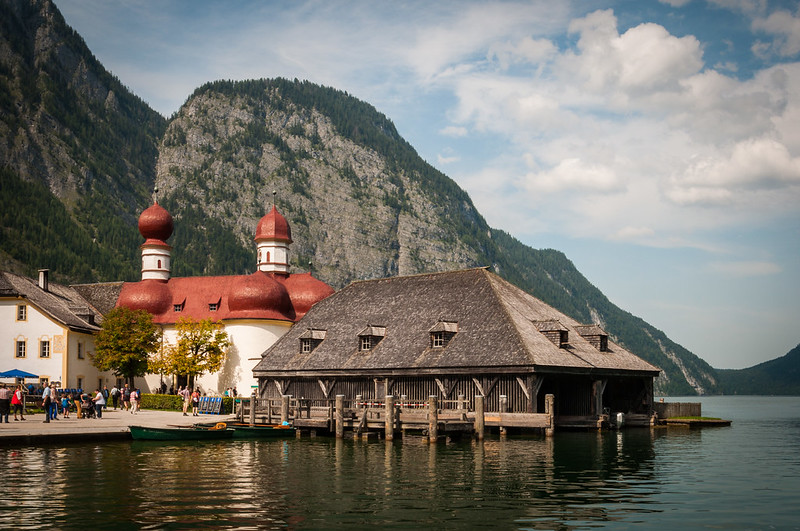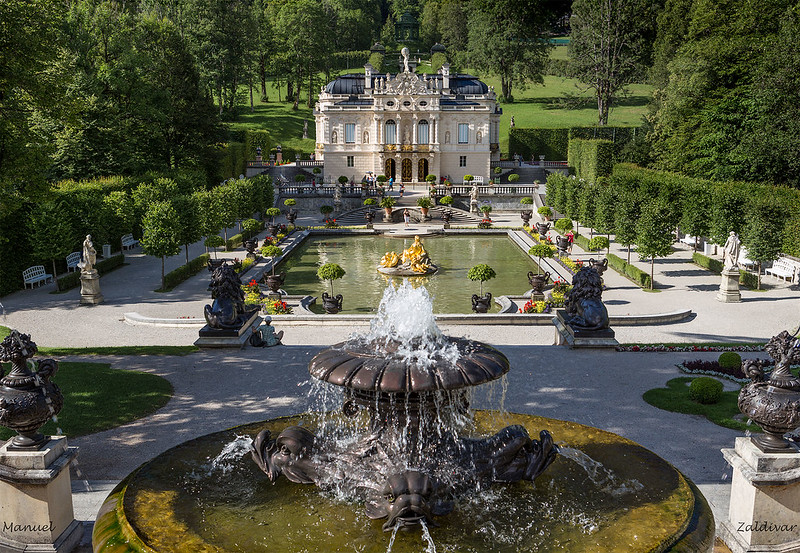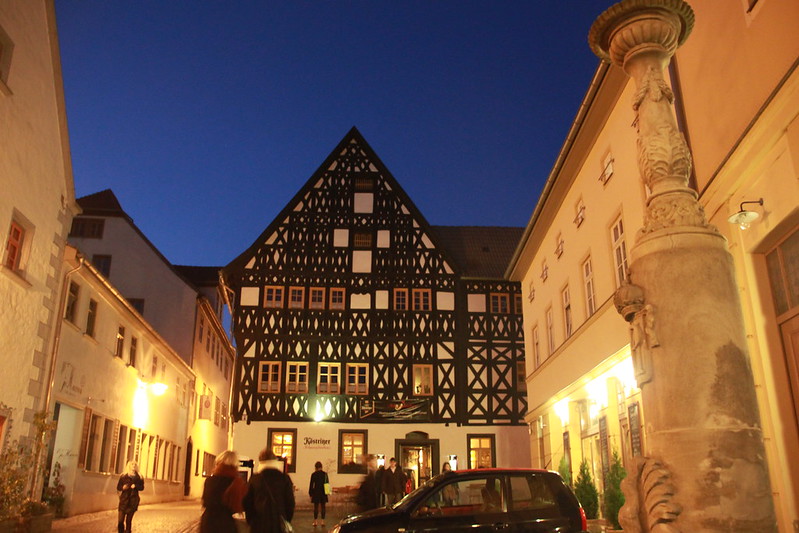
A couple of summers ago, we toured Germany by car, as regulars will know. After visiting the Black Forest and some very picturesque villages in northern Bavaria, the bar was really high. The next state we drove through was Thuringia, in the heart of Germany. This area, in former East Germany (GDR), is perhaps not as beautiful as the previous ones, but it is not without attractions by any means. Although our passage through the region was fleeting, we were able to take a walk through the cities of Weimar and Erfurt, as well as relive the darkest period of recent human history in the Buchenwald Concentration Camp.
What to see in Weimar
Weimar, with its little more than 65,000 inhabitants, is a city with an enormous cultural tradition. Few cities in the world can boast of having been home to so many geniuses. The poets Goethe and Schiller are among those who left their mark, but great figures such as Bach, Strauss, Wagner, Nietzsche, Schopenhauer, Steiner, Martin Luther, Munch, and Paul Klee, among others, also lived and worked there. Two periods marked the intellectual and cultural life of Weimar: the period of Weimar Classicism (1788-1832) and the Bauhaus School during the period of the Weimar Republic (1919-1933). Little Weimar is home to two World Heritage Sites related to these two periods. In total, it has 14 buildings protected by UNESCO, among which the Goethe House (photo below) on the one hand and the main building of the Bauhaus-Universität on the other.
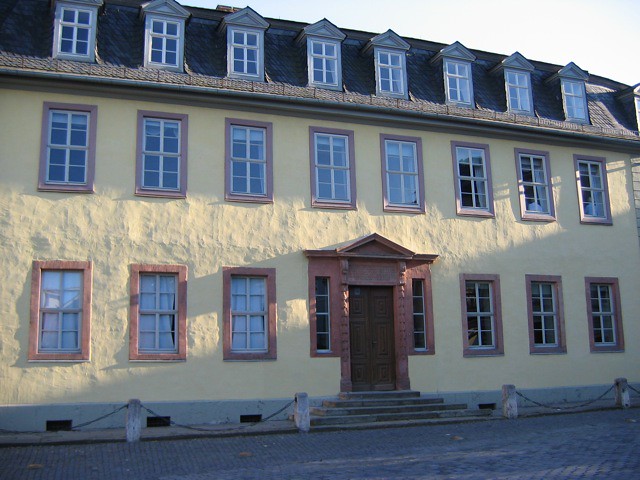
On the Weimar tourism website, you can find a list of the 11 sites that are part of the Weimar Classical Weimar and the three sites of the Bauhaus. The information is not in English, but you can write down the names of the places, see their locations and check the opening hours. To see the ticket prices, you should follow the links to the official websites. We had little time and did not visit in-depth, just a panoramic walk.
Some of the places we saw during our tour were the Library of Duchess Anna Amalia (1691), the Deutsches Nationaltheater (with the statue of Goethe and Schiller in front / the first picture above), the Stadtschloss (norme palace-museum / second picture above) or the fantastic Markt square (first picture of the post), with the imposing Rathaus (town hall) and the historic Elephant Hotel, classic meeting point of many of the illustrious people who passed through Weimar.
Visiting the Buchenwald Concentration Camp
Our main objective in Thuringia was to visit the Buchenwald Concentration Camp, located 10km from Weimar. Buchenwald was one of the most important Nazi camps on German soil. It began operating in July 1937 as a camp for political prisoners but soon began to receive all kinds of inmates: homosexuals, Jehovah’s Witnesses, and, above all, Jews. It is believed that some 238,000 people passed through Buchenwald, of whom some 56,000 died there due to harsh working conditions, disease, medical experiments, and executions. Among those lucky enough to survive the camp was Jorge Semprún, writer, screenwriter (Oscar-nominated for “Z”), and Spanish Minister of Culture from 1988 to 1991.
But, unfortunately, the most famous character of the camp was Ilse Koch, nicknamed “the she-wolf of Buchenwald” (or the bitch). The wife of the camp colonel, Ilse, is considered one of the cruelest people of the Nazi regime and even of history. A sadist and torturer, this infamous woman became famous for collecting tattooed human skin taken from the prisoners. She was condemned to life imprisonment in Dachau trials and ended her days by hanging herself, but never showed remorse. Seeing her photo and her story in the camp was one of the most shocking moments.
The Buchenwald Concentration Camp was liberated in April 1945, but its black history would last until 1950, as after World War II, it became the Soviet Special Camp No. 2. Today both the concentration campgrounds and the memorial built by the Soviets themselves in 1958 can be visited free of charge. There is almost nothing left standing of the original camp facilities, but the crematorium, the prison, some barracks (or replicas), and plenty of original material exhibited in different rooms are still preserved. Some of these areas are not recommended for children because of the crudeness of the images.
What to see in Erfurt
We also had the opportunity to take a short walk through Erfurt, the capital of Thuringia. Erfurt does not have UNESCO World Heritage Sites, nor did it have such a lively cultural and intellectual life as Weimar (although it can boast of being the birthplace of Max Weber and home for many years of Martin Luther), but it does have a very charming medieval quarter full of medieval churches, cobblestone streets and a huge square (Domplatz) with an imposing cathedral: the Erfurter Dom (14th century). To tell the truth, we had to deduce part of its attraction, as a festival was being held in the square and scaffolding, stages, and cranes covered a good part of the views. This photo is borrowed from Flickr (author: Oliver Kurmis). The church that can be seen to the right of the cathedral is the Severikirche (14th century).
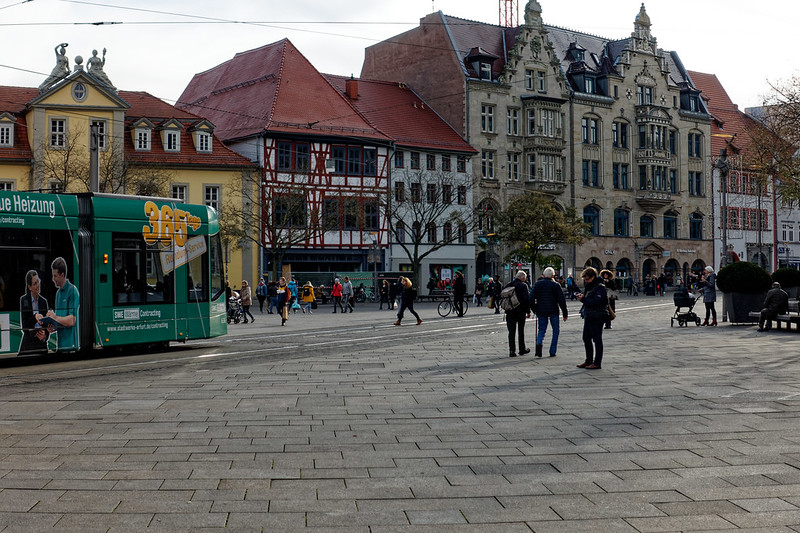
Along with the cathedral, the other major attraction of the city is the Krämerbrücke. This “Bridge of the Abaceros” is undoubtedly one of the most original and picturesque we have ever seen. Built-in stone in 1325, the Krämerbrücke has been flanked since its origins by rows of half-timbered houses. Most of them house souvenir stores or small art exhibits, so a stroll along there is very lively.
Other places to which we could only dedicate a quick visit were the Petersberg Citadel (a huge citadel with a baroque portal from 1674) or the Alte Synagoge (synagogue with medieval origins). Here we leave you an official link where you can see the main points of interest in Erfurt.
